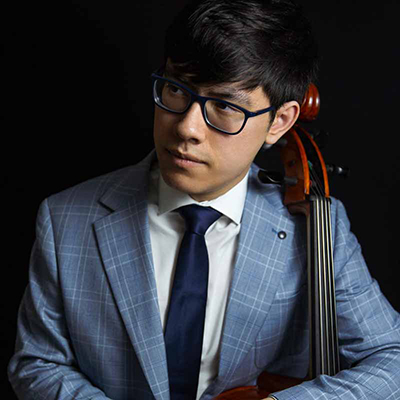By Daniel Hathaway
. Light operas, carillons, Cleveland Orchestra at Blossom
. Almanac notes invention of the metronome & quarter-tone pianos, the founding of Cleaveland & initiatives to perform all of J.S. Bach’s cantatas
HAPPENING THIS WEEKEND:
Time is running out to catch one of the excellent Ohio Light Opera shows this summer. All six are running in repertory through July 30. Check out the calendar here and plan a road trip to Wooster for a matinee or evening performance.
It’s great weather for outdoor music, and what could be more al fresco than tower bells? On Friday, July 21 at 12:15, Keiran Cantilina, Church of the Covenant assistant carillonneur, will play “Music Old and New” on the Alexander McGaffin Carillon in University Circle, followed on Saturday at 6 by Katarzyna Takao-Piastowska, City Carillonneur of Emmerich am Rhein, Germany, who will play Polish music from the 16th & 19th centuries, and Polish Film and Cabaret music from the 20th century as well as American folk songs.
The Cleveland Orchestra performs twice this weekend at Blossom. On Saturday at 7, Kahchun Wong (read an interview here) conducts Yasushi Akutagawa’s Music for Symphony Orchestra, Shostakovich’s Cello Concerto No. 1 with Zlatomir Fung (pictured, read an interview here) & Debussy’s La mer. On Sunday at 7, Keith Lockhart conducts an innovative two-piano program featuring Jean-Yves Thibaudet & Michael Feinstein (who also does vocals) in music from the world of George Gershwin, including Rhapsody in Blue.
Click here to visit the ClevelandClassical.com Concert Listings page for more information.
ALMANAC FOR JULY 21-23:
July 21 by Jarrett Hoffman
Two musical inventions have anniversaries on this date. Financed in part by Charles Ives, a two-manual, quarter-tone piano was patented by Hans Barth on July 21, 1931. And Johann Maelzel, who developed the metronome, died on this date in 1838. One of those machines is more commonly used than the other (imagine if that were reversed?)
Barth was a noted keyboardist and composer. It’s too bad that recordings of his pieces — such as the Concerto for Quarter Tone Piano and Strings — are difficult to track down. But as a worthy consolation, here are Ives’ Three Quarter-Tone Pieces (above: a few measures from the score to No. 1), played by Alexei Lubimov and Pierre-Laurent Aimard on two pianos, one tuned a quarter-tone lower than the other.
Ives originally conceived of the first and third pieces for a single performer with a two-manual instrument such as Barth’s. In fact, Barth gave just such a performance of No. 3 at Carnegie Hall in 1930. Perhaps satisfied at having proved his mettle — and who can blame him — he opted to join with another player for the premieres of Nos. 1 and 3.
July 22
On this date in 1796, Cleaveland was established as a settlement by the surveyors of the Connecticut Land Company and named after their leader, General Moses Cleaveland. (Although he supervised the design of what would become our modern downtown, he returned home shortly thereafter and never returned to Ohio.) The name of the settlement was shortened in 1831, allegedly in order to fit on the masthead of The Cleveland Advertiser, and it wasn’t until 1836 that the settlement became incorporated as a city.
Culture took even longer to arrive on the banks of the Cuyahoga River, a history laid out by Cleveland State University professor J. Heywood Alexander in his article in The Encyclopedia of Cleveland History. Jazz began to flourish in the early 20th century (read a parallel article by Joe Mossbrook and Chris Columbi here.)
Fast forward to 2020 to take a tour of the city with Cleveland Orchestra cellist Alan Harrell, who plays Bach in a number of different locations, and follows that up by popping up all over Northeast Ohio in a second video.
July 23
Johann Sebastian Bach left us some 200 church cantatas, and speaking of challenges, British composer and conductor William Gillies Whitaker, born on this date in 1876, set out to perform all of them. He succeeded, presenting a third of them in Newcastle and the rest in Glasgow with his Bach Choir.
A number of conductors have recorded all the sacred cantatas, including Karl Richter, Masaaki Suzuki, John Eliot Gardiner, Helmuth Rilling, Nikolaus Harnoncourt with Gustav Leonhardt, and Ton Koopman. I’ve had friends who made it a habit to listen to one cantata every Sunday morning, an inspiring regimen that could take four years to complete. It would be interesting to listen to a single conductor’s interpretations, or to mix and match them. Time to get started!



